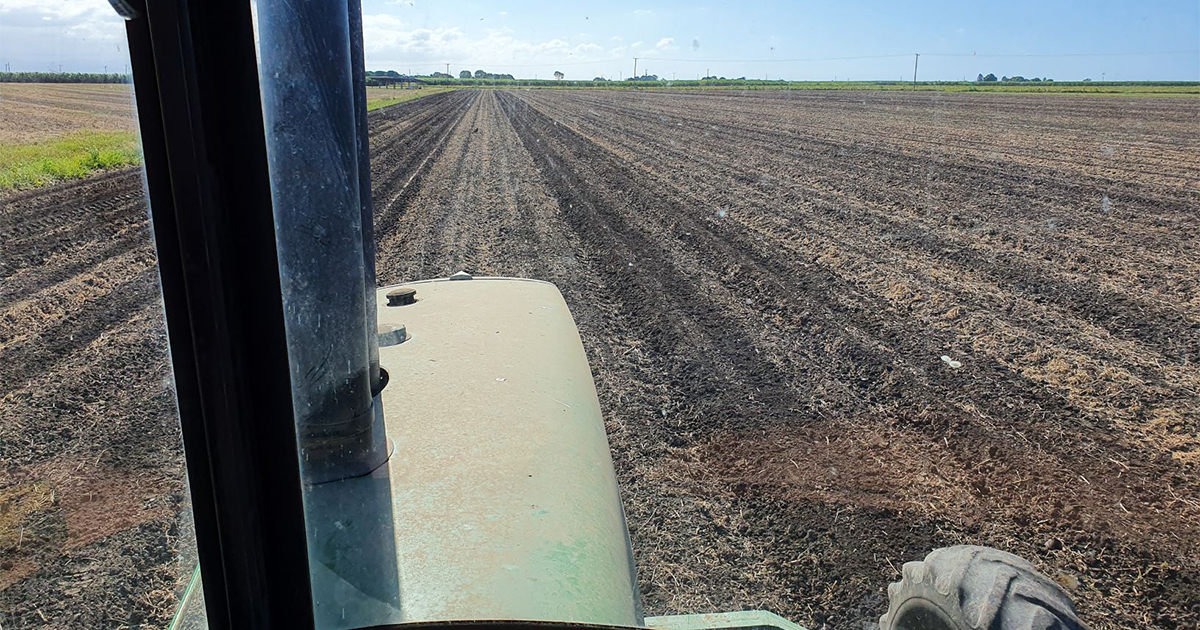Tips for planning a break crop sequence
Foundation blocks of soil health:
- Crop rotation – including legumes
- Retaining crop residues – build organic reserves
- Minimum tillage – minimise disturbance
- Controlled traffic – reduce compaction
When these foundation blocks are in place, soils are able to build and maintain populations of beneficial micro-organisms. Yield losses to pathogens such as plant parasitic nematodes are reduced, nutrients are available from organic and inorganic sources and crop roots are able to explore more of the soil profile to access moisture and nutrients.

- As a general rule, avoid back-to-back planting of the same crop species. There are benefits in rotating between broadleaf and grass crops to manage disease, pest and weed risks.
- Some crops have an allelopathic effect on the soil, usually through breakdown of crop residues.
Nutrient and soil manangement
- Conduct a soil test (surface and at depth) and use the results to plan the application of ameliorants and nutrients. Engage an agronomist to assist with planning and crop management decisions.
- Attend to agronomic constraints. Most crops grow best when soil pH is between 5 and 8, the soil is well-drained and there is minimal compaction and cultivation.
- Some crops are good foragers for nutrients and can be used to deplete excess nutrients from previous crops. For example, use a grass crop to absorb residual nitrogen after a legume crop. Legumes should be sown into a low-nitrogen soil environment.
- Use the correct rhizobia inoculant for each legume and don’t skimp on the rate. The inoculant is a live culture and must be treated carefully.
- Where possible plant into moist soil conditions to encourage even and vigorous germination and establishment.
Land preparation
- Remove obstacles such as sticks and rocks, and establish an even soil surface at planting, particularly for pulse crops that must be harvested close to the ground.
- Consider a sequence of crops that maximise the value of crop residue and opportunities for direct drilling or zonal tillage. Legume crop residue is easily broken down and generally does not impede sowing while grass crop residues may need to be incorporated, raked or baled before sowing the next crop.

Weed control
- Generally, grass weeds are best controlled in broadleaf crops and vice versa. Also look for non-herbicide options to help manage weeds. Growing two broadleaf crops in sequence can provide excellent control for grass weed problems. Maximise crop competition wherever possible.
- Plan the use of herbicides across the break crop sequence to avoid over-use of certain herbicides and to avoid herbicide carryover affecting crop safety for the following crop. For example, legumes are generally sensitive to aminopyralid, clopyralid and picloram based herbicides that can provide knockdown of a range of broadleaf weeds in cereals.
Integrated pest and disease management
- Protect grain quality and yield while accepting a level of vegetative damage.
- Nematodes can be managed with right crop choice. Test for the presence of nematodes and use the results to plan a crop sequence to reduce the number of pest species. Legumes are a key component to rebuilding soil biological health.
- Monitor beneficial and pest insects. Most rotational crops have a short growing season and pests can flare up and cause significant damage at times. Use ‘soft’ chemical options first to preserve beneficials and only use ‘harder’ options to if required to reduce economic loss. Seek advice before spraying and follow recommendations for resistance management.

Marketing
- Ensure that crop protection decisions do not impact on your marketing options. Follow all label directives and discuss any chemical use restrictions with your marketer.
- Marketing grain can have pitfalls. Seek advice early and it is often worthwhile arranging a contract or forward selling your crop to ensure there is a market and that the economics stack-up. Take into account the possible need for on-farm storage and grain handling, freight to distant markets or processors and the potential difficulties in selling small consignments of grain.
- Give careful consideration to on-farm storage options.

Equipment and expertise
- Many break crop options require specialised equipment for planting, harvesting or both. Make arrangements with contractors early to ensure timely operations.
- Engage with experienced agronomic advisors particularly for crop protection advice.
Irrigation
- Where irrigation is available, growers will likely aim for higher yield through higher inputs and more intense management. Consider overall water demand, irrigation scheduling and optimising local rainfall patterns (particularly at planting and harvest times).
- Green manure, brown manure, hay, silage and short bare fallow are all options within a break crop sequence to manage water use and weeds.
Harvesting
- Timing of harvest is usually critical. Many crops suffer weathering if conditions at harvest cause delays.

Growing the crops
There is limited agronomic information available for some crops being considered as break crops in the coastal and hinterland environments. Optimal planting windows, seeding rates, row spacing and variety choice may be largely unknown and must be considered as a management risk until there is enough local experience to make more detailed recommendations. The GRDC GrowNotes collection for the Northern Region is a good place to start but keep in mind much of the information relates to production in other environmental zones.
- GrowNotes for Northern Region crops:
Read Pulse Check blog articles | Pulse Check Coastal facebook | Subscribe to the monthly newsletter

